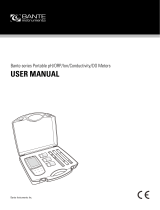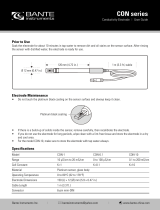
Table of Contents
1 Brief Instruction .......................................................................................................... - 3 -
2 Technical Specifications ............................................................................................... - 3 -
3 About the Meter ......................................................................................................... - 5 -
4 What’s in the kit .......................................................................................................... - 6 -
5 Preparation ................................................................................................................. - 7 -
6 pH Measurement ........................................................................................................ - 8 -
6.1 pH Electrode ................................................................................................................... - 8 -
6.2 pH Calibration ................................................................................................................. - 8 -
6.3 Notes about pH Calibration ............................................................................................. - 9 -
6.4 Sample Test .................................................................................................................. - 10 -
6.5 Recommended pH Electrodes for Different Applications ................................................. - 10 -
6.6 Parameter Setting ......................................................................................................... - 11 -
6.7 Cleaning pH Electrode ................................................................................................... - 13 -
6.8 The Self-diagnose Information ....................................................................................... - 14 -
6.9 Notes about pH............................................................................................................. - 14 -
7 ORP Measurement .................................................................................................... - 15 -
7.1 Sample Test .................................................................................................................. - 15 -
7.2 Notes about ORP .......................................................................................................... - 15 -
7.3 Clean and activate ORP electrode .................................................................................. - 15 -
7.4 ORP Parameter Setting .................................................................................................. - 16 -
8 Conductivity Measurement ....................................................................................... - 16 -
8.1 Preparation .................................................................................................................. - 16 -
8.2 Conductivity Calibration: ............................................................................................... - 16 -
8.3 Sample Test .................................................................................................................. - 17 -
8.4 Conductivity Electrode’s Maintenance............................................................................ - 17 -
8.5 Notes about Conductivity Calibration ............................................................................. - 17 -
8.6 Parameter Setting: ........................................................................................................ - 18 -
8.7 Temperature compensation coefficient .......................................................................... - 20 -
8.8 Notes about conductivity parameter setting ................................................................... - 21 -
9 Limited Warranty ...................................................................................................... - 22 -
Scan the QR code below to watch the tutorial video on Youtube.


























